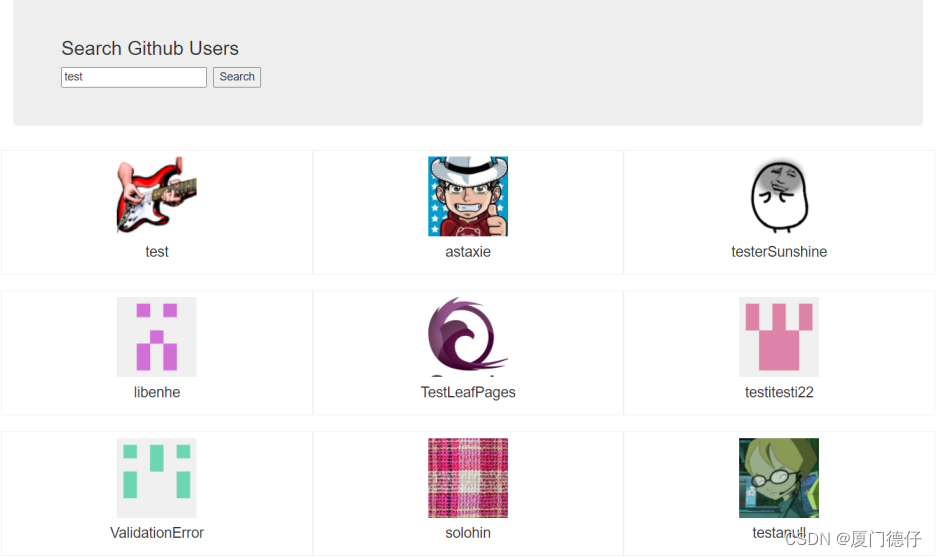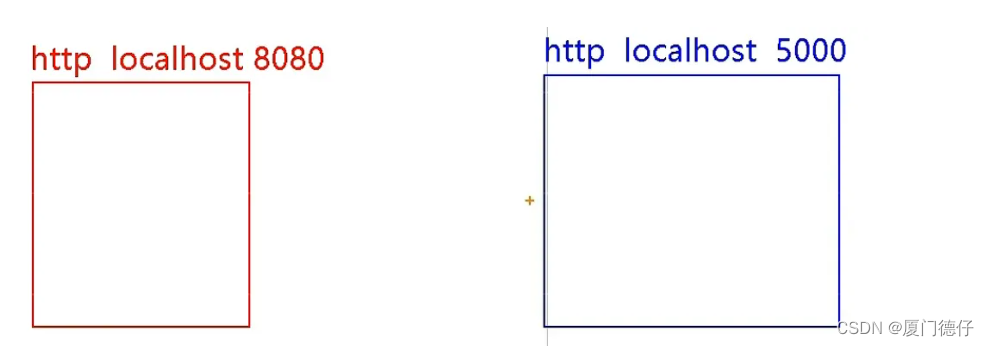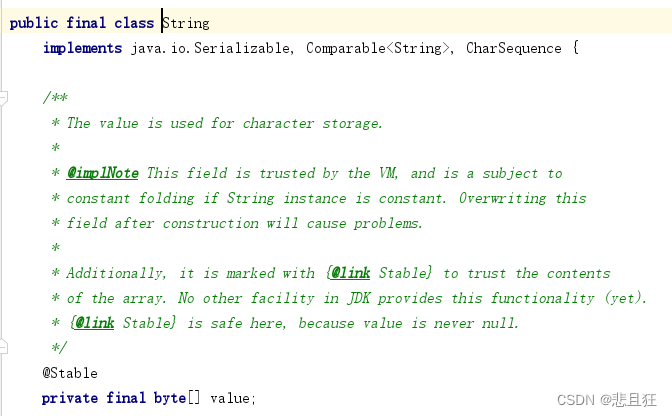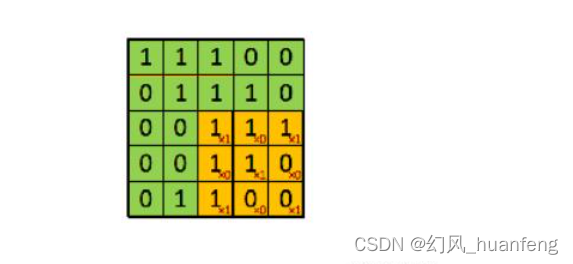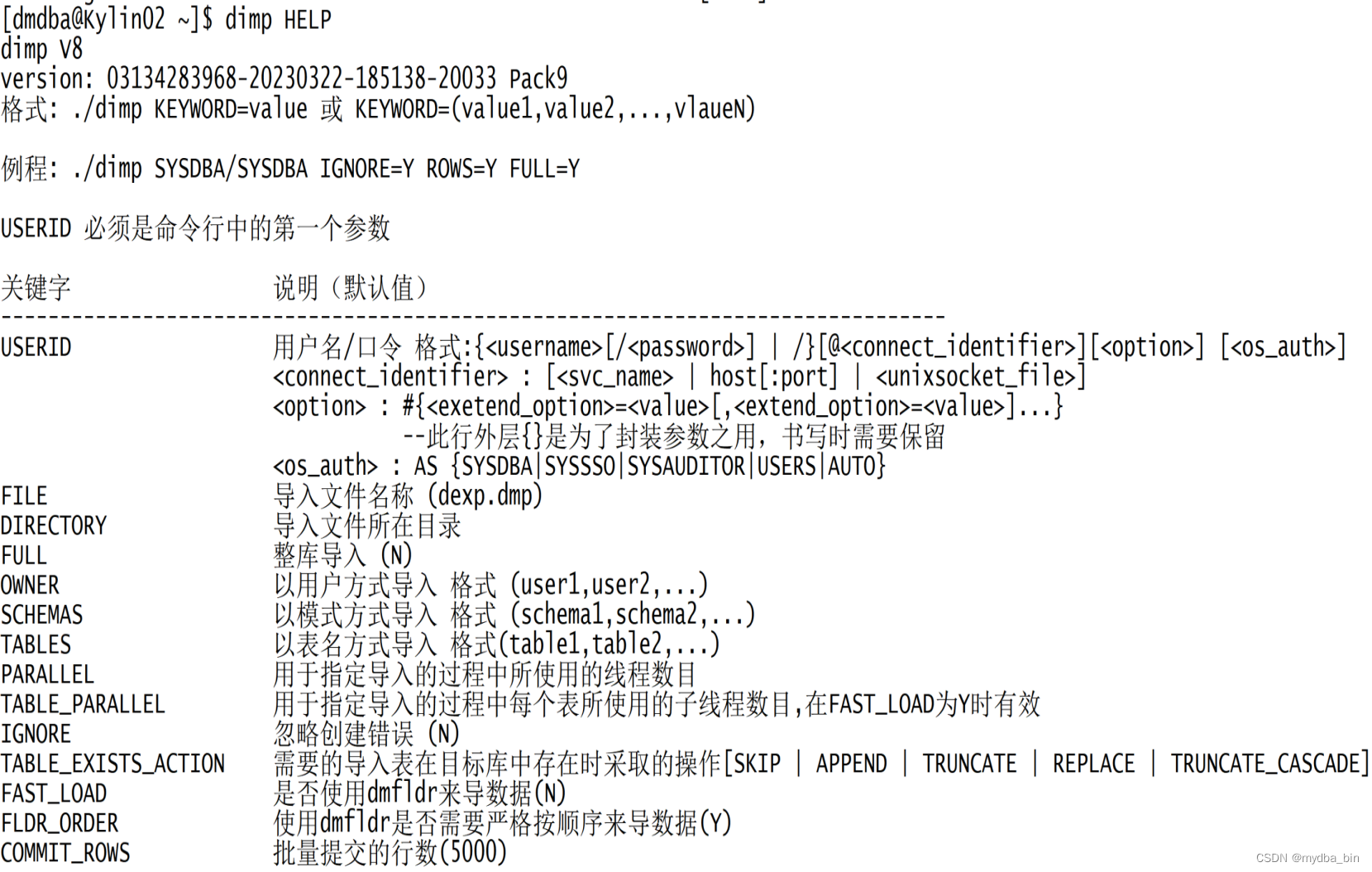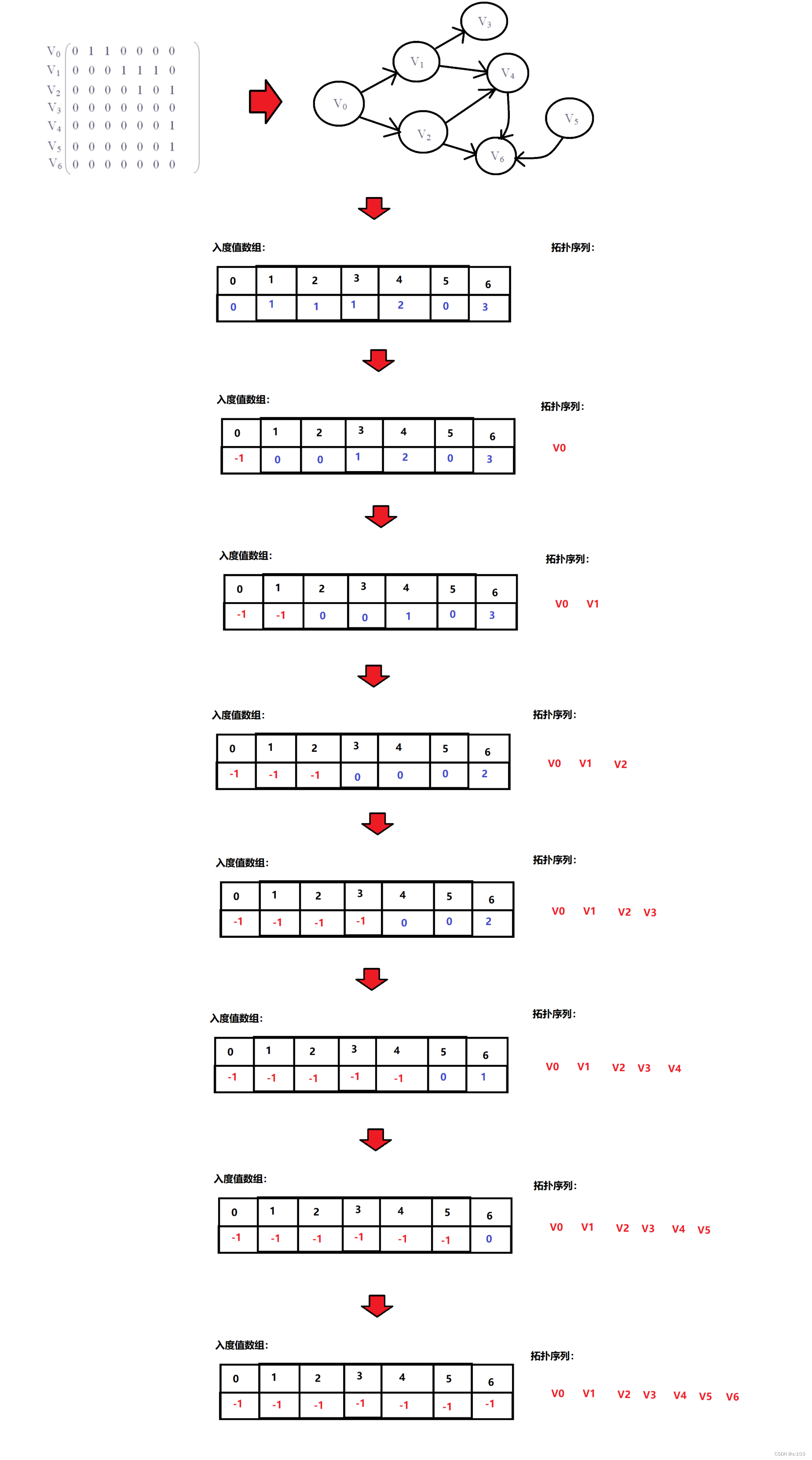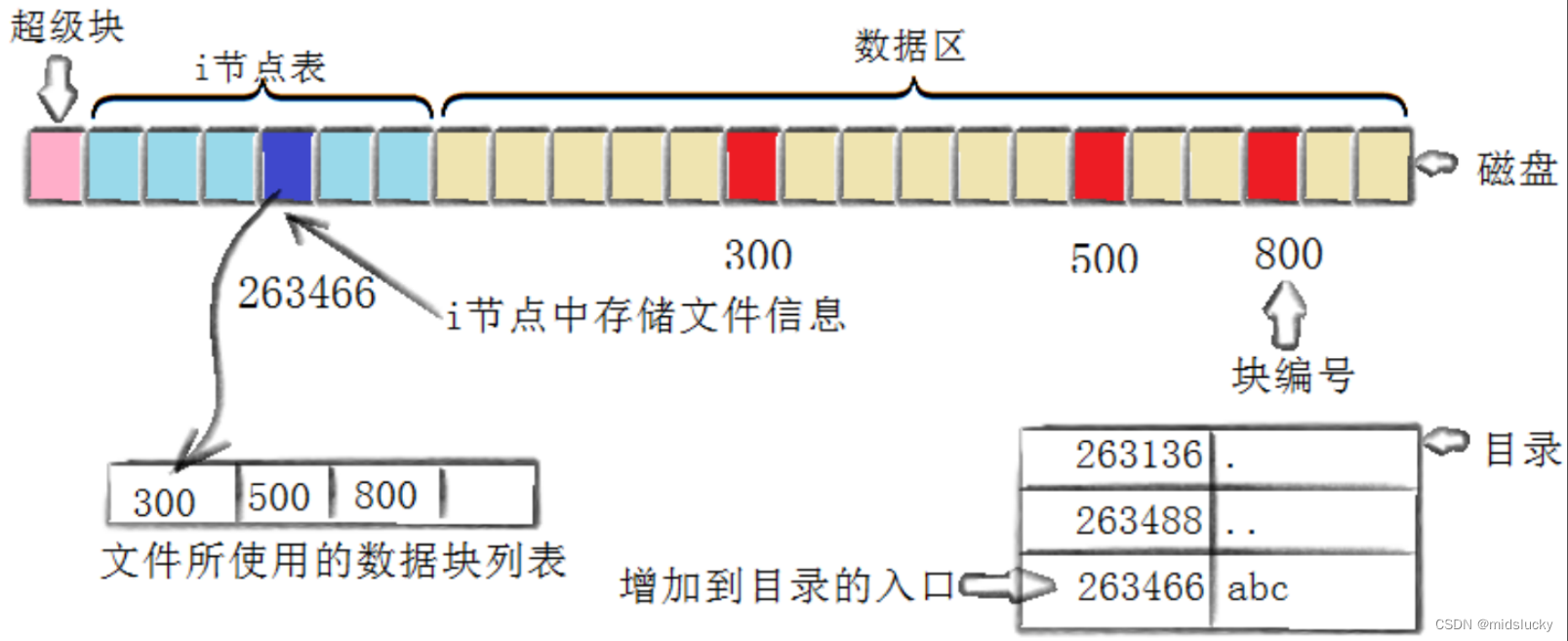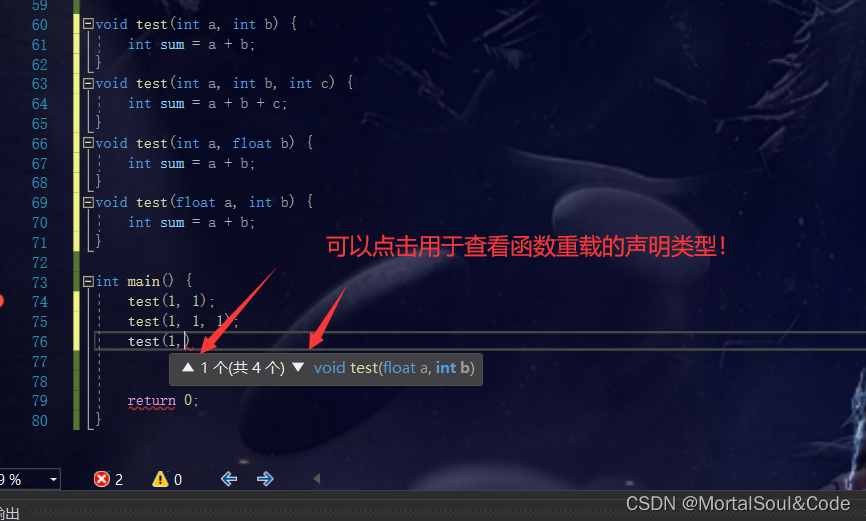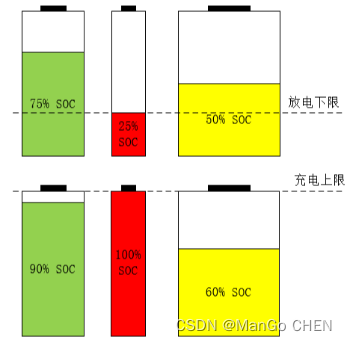回顾
常用的发送Ajax请求的方法有哪些?
- xhr new XMLHttpRequest() xhr.open()、xhr.send()(真正开发中很少用到,太麻烦了,我们一般使用的都是他的二次封装)
- jQuery 其对xhr有二次封装 . g e t ( ) 、 .get()、 .get()、.post axios Promise风格,体积比jQuery小,并且支持请求拦截器、响应拦截器等等(最常用,也是Vue推荐的发送Ajax请求的方法)
- fetch 跟xhr是平级的,它在window内置对象上直接存在!并且其也是Promise风格的,IE不支持(也有人使用)
尝试使用axios发送Ajax请求
假设现在已经开好了两台服务器
在本机的5000端口,使用get请求我们可以获取学生信息
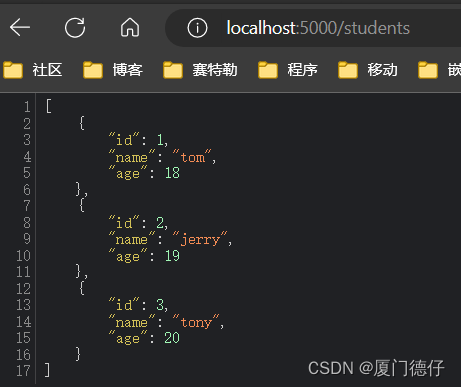
我们在页面上创建一个按钮,点击即可发送get请求获的学生数据:
<template>
<div>
<button @click="getStudents">获取学生信息</button>
<button @click="getCars">获取汽车信息</button>
</div>
</template>
<script>
import axios from 'axios'
export default {
name:'App',
methods: {
getStudents(){
axios.get('http://localhost:5000/students').then(
response => {
console.log('请求成功了',response.data)
},
error => {
console.log('请求失败了',error.message)
}
)
},
getCars(){
axios.get('http://localhost:5000/demo/cars').then(
response => {
console.log('请求成功了',response.data)
},
error => {
console.log('请求失败了',error.message)
}
)
}
},
}
</script>

很明显这是一个跨域问题,也就是说我们违背了同源策略
复习:同源策略规定了三个东西必须一致
①协议名
②主机名
③端口号
我们现在所处的位置是localhost:8080
也就是说此时我们所处的状态:
使用的http协议
主机名是localhost
端口号是8080
但服务器所处的状态:
使用的http协议
主机名是localhost
端口号是5000
所以说并不同源,故发生了跨域问题
跨域问题的过程:浏览器发出请求之后,服务器接收到了请求。同时服务器也会把数据交给本地浏览器。浏览器也收到了这个数据,但是浏览器发现这里存在跨域问题,所以浏览器不会把这个数据交给用户!
那么我们如何解决跨域问题呢?
这里有几种思路:
- cors 最标准的解决办法 使用这个方法不用前端人员去做任何事情。其原理是:写服务器的人,让服务器给我们返回数据的时候加几个响应头,而浏览器看到了这几个响应头,就会放行,把数据给我们。
- jsonp 借助script标签的src属性。(真正开发基本不用!,因为其需要前后端一起配合,并且只能解决get请求的跨域问题)
使用代理服务器解决跨域问题的原理

左边红色方框代表本地浏览器,中间的粉色方框代表代理服务器,右边的蓝色方框代表服务器。
左边这个8080服务器,是Vue脚手架帮我们开启的,用来支撑脚手架的运行
这个代理服务器与我们所处的端口号一定是一样的!
当我们向服务器请求学生信息的时候,我们不直接请求服务器,而是找代理服务器,代理服务器收到了我们本次请求之后,他会帮我们把请求转发给服务器。然后服务器会把数据交给代理服务器,最后代理服务器再把数据交给我们。
从这个过程中我们不难看出,代理服务器有点“中介”的味道

有人可能会问这两条线难道不会存在跨域问题吗?
当然不会
!左边的是代理服务器,右边的是服务器。服务器与服务器之间传数据压根就不用Ajax,Ajax它是一种前端技术!
Vue脚手架配置代理
既然我们知道了要用代理服务器来解决跨域问题,那么我们怎么开启这个服务器呢?
这里有两种常用的方法:
nginx
vue-cli (也就是借助Vue脚手架)
这里我们使用第二种方式,他更加的简单。
方法一
打开Vue-CLI的配置参考,找到devServer.proxy
devServer.proxy
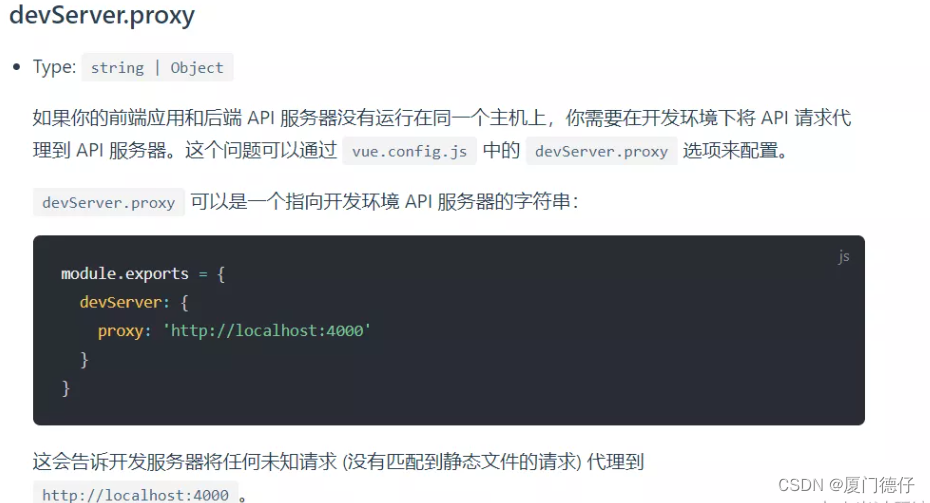
注意:这个proxy配置项里面填的是代理服务器向哪一个服务器拿东西
根据上面的案例(向5000端口的服务器要学生数据),代码如下:
const { defineConfig } = require('@vue/cli-service')
module.exports = defineConfig({
transpileDependencies: true,
devServer:{
proxy:'http://localhost:5000'
},
})
因为我们修改了Vue的配置文件,所以必须重启脚手架才能生效、
在这个基础上我们修改请求的服务器:
src\App.vue
<template>
<div>
<button @click="getStudents">获取学生信息</button>
<button @click="getCars">获取汽车信息</button>
</div>
</template>
<script>
import axios from 'axios'
export default {
name:'App',
methods: {
getStudents(){
axios.get('http://localhost:8080/students').then(
response => {
console.log('请求成功了',response.data)
},
error => {
console.log('请求失败了',error.message)
}
)
},
getCars(){
axios.get('http://localhost:5000/demo/cars').then(
response => {
console.log('请求成功了',response.data)
},
error => {
console.log('请求失败了',error.message)
}
)
}
},
}
</script>

这里有两个细节需要我们注意:
①这样配置代理服务器并非会把所有请求发给服务器。
当我们请求的资源8080服务器(本地服务器)本来就有的时候,代理服务器不会再把请求转发给服务器.
我们脚手架中的public文件夹就相当于8080服务器(本地服务器)的根路径。说直白点8080服务器中有什么public文件夹中就有什么。
我们可以举一个例子:
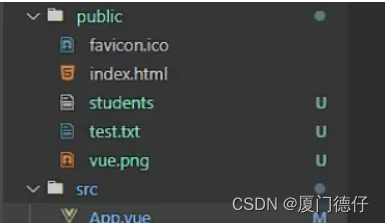
我们在students文件中写上112233。如果在这种情况下我们去请求,代理服务器不会把请求转发,而是直接返回112233.

②使用这种方式配置,只能配置一个代理服务器!

本例需要下载axios库 npm install axios
配置参考文档Vue-Cli devServer.proxy
vue.config.js 是一个可选的配置文件,如果项目的(和package.json同级的)根目录中存在这个文件,那么它会被@vue/cli-service 自动加载。你也可以使用package.json中的vue字段,但是注意这种写法需要你严格遵照JSON的格式来写
方法一
在vue.config.js中添加如下配置
devServer:{
proxy:"http://localhost:5000"
}
说明:
- 优点:配置简单,请求资源时直接发给前端(8080)即可。
- 缺点:不能配置多个代理,不能灵活的控制请求是否走代理。
- 工作方式:若按照上述配置代理,当请求了前端不存在的资源时,那么该请求会转发给服务器 (优先匹配前端资源)
方法二
编写vue.config.js配置具体代理规则:
module.exports = {
devServer: {
proxy: {
'/api1': {// 匹配所有以 '/api1'开头的请求路径
target: 'http://localhost:5000',// 代理目标的基础路径
changeOrigin: true,
pathRewrite: {'^/api1': ''}//重写路径。也就是把/api1给替换为空格。否则会把/api1也放在url里带给服务器
},
'/api2': {// 匹配所有以 '/api2'开头的请求路径
target: 'http://localhost:5001',// 代理目标的基础路径
changeOrigin: true,
pathRewrite: {'^/api2': ''}
}
}
}
}
/*
changeOrigin设置为true时,服务器收到的请求头中的host为:localhost:5000
changeOrigin设置为false时,服务器收到的请求头中的host为:localhost:8080
changeOrigin默认值为true
*/
说明:
配置好后在访问目标服务器资源时。就要在端口后后面加/api1前缀。表示走代理服务器。不加表示不走代理。当然/api1可以换个名字。比如:/fhzm
- 优点:可以配置多个代理,且可以灵活的控制请求是否走代理。
- 缺点:配置略微繁琐,请求资源时必须加前缀。
如果不重写路径:

代理服务器在转发请求的时候,也会带上前缀。也就是说代理服务器是想要服务器上的/api1/students数据,但我们的本意是要/students的数据。
解决这个问题我们需要另外一个配置项:pathRewrite
它的值是一个对象,里面包含着key和value。其中key写正则的匹配条件,value是替换的值
2、GitHub用户搜索案例
public\index.html
<!DOCTYPE html>
<html lang="">
<head>
<meta charset="utf-8">
<!-- 下面这行代码是针对IE浏览器的一个特殊配置,含义是让IE浏览器以最高的渲染级别渲染页面-->
<meta http-equiv="X-UA-Compatible" content="IE=edge">
<!--开启移动端的理想视口-->
<meta name="viewport" content="width=device-width,initial-scale=1.0">
<!--配置页签图标-->
<link rel="icon" href="<%= BASE_URL %>favicon.ico">
<!--引入第三方样式-->
<link rel="stylesheet" href="<%= BASE_URL %>css/bootstrap.css">
<title><%= htmlWebpackPlugin.options.title %></title>
</head>
<body>
<!--当浏览器不支持js时,noscript中的元素就会被渲染-->
<noscript>
<strong>We're sorry but <%= htmlWebpackPlugin.options.title %> doesn't work properly without JavaScript enabled. Please enable it to continue.</strong>
</noscript>
<!--容器-->
<div id="app"></div>
<!-- built files will be auto injected -->
</body>
</html>
src\App.vue
<template>
<div class="container">
<Search/>
<List/>
</div>
</template>
<script>
import Search from "./components/Search.vue";
import List from "./components/List.vue"
export default {
name:"App",
components:{
Search,
List
},
data(){
return{
}
}
}
</script>
src\components\List.vue
<template>
<div class="row">
<!-- 展示用户列表 -->
<div v-show="info.users.length" class="card" v-for="u in info.users" :key="u.login">
<a :href="u.html_url" target="_blank">
<img :src="u.avatar_url" style='width: 100px'/>
</a>
<p class="card-text">{{u.login}}</p>
</div>
<!-- 展示欢迎词 -->
<h1 v-show="info.isFirst">欢迎使用</h1>
<!-- 展示加载 -->
<h1 v-show="info.isLoading">加载中。。。。。</h1>
<!-- 展示错误信息 -->
<h1 v-show="info.errMsg">{{info.errMsg}}</h1>
</div>
</template>
<script>
export default{
name:"List",
data(){
return{
info:{
isFirst:true,
isLoading:false,
errMsg:"",
users:[]
}
}
},
methods:{
allUsers(obj){
this.info={...this.info,...obj};
}
},
mounted(){
this.$bus.$on("updateListData",this.allUsers);
}
}
</script>
<style scoped>
.album {
min-height: 50rem; /* Can be removed; just added for demo purposes */
padding-top: 3rem;
padding-bottom: 3rem;
background-color: #f7f7f7;
}
.card {
float: left;
width: 33.333%;
padding: .75rem;
margin-bottom: 2rem;
border: 1px solid #efefef;
text-align: center;
}
.card > img {
margin-bottom: .75rem;
border-radius: 100px;
}
.card-text {
font-size: 85%;
}
</style>
src\components\Search.vue
<template>
<section class="jumbotron">
<h3 class="jumbotron-heading">Search Github Users</h3>
<div>
<input type="text" v-model="keyWord" placeholder="enter the name you search"/>
<button @click="searchUsers">Search</button>
</div>
</section>
</template>
<script>
import axios from "axios";
//https://api.github.com/search/users?q=xxx
export default{
name:"Search",
data(){
return{
keyWord:""
}
},
methods:{
searchUsers(){
this.$bus.$emit("updateListData",{isFirst:false,isLoading:true, errMsg:"",users:[]})
axios.get(`https://api.github.com/search/users?q=${this.keyWord}`).then(
response=>{
this.$bus.$emit("updateListData",{isLoading:false, errMsg:"",users:response.data.items})
},reason=>{
this.$bus.$emit("updateListData",{isLoading:false, errMsg:reason.message,users:[]})
});
},
},
}
</script>
<style>
</style>
